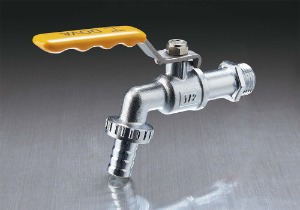2025-07-04
Brass gas valves manufacturer play a critical role in controlling the flow of gas in various residential, commercial, and industrial applications. Known for their durability, corrosion resistance, and reliability, these valves have long been a preferred choice in gas piping systems. Over the years, the design, manufacturing processes, and materials used in brass gas valves have undergone significant changes. These improvements aim to enhance safety, efficiency, and adaptability to meet evolving regulatory standards and customer needs.

Historically, brass gas valves were relatively simple devices, designed mainly for on-off control of gas flow. They typically featured a manual lever or knob connected to a ball or gate mechanism inside the valve body. The valve body, made from brass, was valued for its corrosion resistance and machinability, making it suitable for use with natural gas, propane, and other gases.
Early valves emphasized robustness and ease of operation but offered limited options for automation or precision control. Seals and packing materials were basic, which sometimes resulted in leaks or the need for frequent maintenance.
While brass remains the primary material for gas valve bodies due to its properties, improvements in material composition and treatment have enhanced valve performance.
High-Quality Brass Alloys: Modern valves use carefully controlled brass alloys with optimized ratios of copper, zinc, and small amounts of other metals such as tin. These alloys improve strength, machinability, and resistance to dezincification, a corrosion process that can degrade brass in certain environments.
Surface Treatments: Some valves incorporate protective coatings or plating to enhance corrosion resistance further, especially in harsh environments such as outdoor installations or marine applications.
Improved Sealing Materials: Advances in elastomers and polymers for valve seats and seals have significantly reduced leakage risks and extended service life.
These material enhancements contribute to more durable and reliable gas valves.
Design changes in brass gas valves have focused on improving safety, user convenience, and adaptability.
Ball Valve Mechanism: The ball valve design has become the standard for many brass gas valves due to its tight sealing and simple operation. Modern ball valves feature precision-machined balls and seats that ensure smooth turning and minimal leakage.
Compact and Lightweight Designs: Advances in manufacturing have allowed valves to become more compact and lighter without compromising strength, easing installation and reducing system weight.
Automation Compatibility: Many brass gas valves now support automation with actuators or remote control options. This enables integration with modern gas management and monitoring systems for improved safety and operational efficiency.
These functional upgrades allow brass gas valves to meet a wider range of application requirements.
The production of brass gas valves has benefited from improved manufacturing technologies that increase precision, quality, and consistency.
CNC Machining: Computer Numerical Control machining delivers highly accurate and repeatable components, ensuring tighter tolerances and better valve performance.
Advanced Casting Techniques: Investment casting and precision forging reduce material waste and improve the structural integrity of valve bodies.
Automated Assembly and Testing: Modern assembly lines incorporate automation for part fitting, leak testing, and quality control, higher throughput and reliability.
These process improvements contribute to lower production costs and product consistency.
Brass gas valves have been subject to increasingly stringent safety and environmental regulations.
Certification Compliance: Valves are tested to meet international standards such as ANSI, ISO, and CSA, ensuring safe operation under various conditions.
Leak Prevention: Innovations in sealing and testing techniques have drastically reduced the chances of gas leaks, enhancing user safety.
Environmental Considerations: Some manufacturers have adopted environmentally friendly practices and materials to reduce the ecological footprint of valve production and disposal.
These developments ensure brass gas valves remain safe and reliable components in gas distribution systems.